Jeep Grand Cherokee Vs Land Rover Discovery Comparison

Few brands hold reputations for off-road prowess like Jeep and Land Rover.
For decades, these two automakers have built hearty SUVs as at home on a cottage trail as they are in front of a swanky hotel. The Jeep Grand Cherokee and Land Rover Discovery both represent something of a sweet spot in their respective family lineups: big enough to haul five adults and their stuff, but not too large as to be unwieldy.
Get a Quote on a New Toyota Highlander or Buick EnclaveWith a new generation of two-row Grand Cherokee upon us for 2022, and the Disco getting its own mild refresh last year, it was high time to pit these two titans against one another. Managing editor Mike Schlee and I spent a week with both to figure out which high-falutin’ high-rider is the one to have.
Interior and Cargo Space
Grand Cherokee: The Jeep immediately impresses with its rich, two-tone interior layout. Quilted Tupelo leather—named after the honey—open pore wood, and tasteful amounts of brushed chrome elevate the space to truly premium status. The combination not only looks great, but feels it too. Jeep kept the top of the dashboard a matte black as well, so distracting reflections are kept to a minimum. At night, the soft glow of the ambient lighting peeks out from the undersides of the dashboard. It’s purely an aesthetic thing, but we like the elegantly thin headrests. Biggest criticism? The over-reliance on piano black trim for the center console, making it impossible to avoid mucking it up.
Mike and I are split on the front seats. “Grand Cherokee still uses the same seat foundation featured in many Dodge, Chrysler, Jeep products over the past decade,” explains Schlee, “I’ve always found the seat back to flat and firm.” On the flip side, I find them quietly excellent, offering up lots of support and aiding good posture. The wide center console makes the space feel a little tight up front, but that huge glass roof lets a lot of light in.
Space in both rows is adult-friendly. The rear seats recline slightly, giving extra-tall folks a reprieve if the 39.4 inches of headroom (1,001 millimeters) is insufficient. Jeep has ever so slightly cut rear legroom too, though at 38.2 inches (970 mm) it’s hardly what we’d call lacking. The door opening is also larger and squarer than its British opposition.
Pop the powered tailgate and there’s a very usable 37.7 cubic feet (1,068 liters). The load floor is flat and relatively low, though the wheel arches eat into the available space. Press a button to fold the 60/40-split rear seats and the figure expands to 70.8 cubes (2,005 L).
Towing capacity for this V8-powered GC is rated at 7,200 lb (3,266 kg) when properly equipped.
Discovery: It might have the nickname “Disco,” but this mid-sized Land Rover ain’t nearly as flashy as its American analog. Chalk some of that up to the plain black interior, a look that the contrast piping alone can’t elevate. The dashboard is altogether simpler too, with a simple design that’s either clean or boring, depending on your perspective. JLR’s use of neoprene is a smart move, giving the Disco an extra dash of adventurous attitude. It does leave the center console, a primary touch point, feeling a little cheap, however. Not the case with the aluminum stanchions framing the central controls. We’re also big fans of the little hidden cubby just behind the climate controls.
It’s a much more noticeable climb up into the Discovery’s front seats. Once there, the driver has a commanding view of the road ahead, and the low window line makes it easy to see out the sides, too. For this short-legged driver, it was impossible to fully gel with the seating position, an upright, close-to-wheel affair that feels more like a barstool. The light bolstering of the leather front seats doesn’t hep, but on longer drives they give up little in comfort. A massage function is available on the options list, though it’s not present here.
Access to the second row is a mixed bag. The aperture is small and angled, but the cushion and backs prove more supportive than the flat Jeep items. Second-row headroom is barely half an inch tighter than inside the Grand Cherokee, largely due to the headliner gap between the two moonroofs. Legroom is 37.4 inches (950 mm), two full inches fewer than the Jeep. That’s because Land Rover has squeezed a pair of third-row seats in here. They’re best used as part-time perches, thanks to a cushion that’s very low to the ground, but there’s room for adults in a pinch. Want that in the Jeep? Gotta upgrade to the big Grand Cherokee L, then.
With the way-back up, trunk space is a laughably small 9.1 cubes (258 L). Fold them down and there’s a much friendlier 45.0 cubes (1,274 L) to use; that’s 74.3 cubes (2,104 L) when running in two-seater mode. The powered load tray lip makes it harder to reach runaway groceries, though.
With the inline-six motor, the Disco can tow up to 8,200 lb (3,719 kg) when properly equipped.
SEE ALSO: 2021 Jeep Grand Cherokee L Review: Big Red Sleigh RideBottom Line: The Jeep wows with its more modern interior, while the Land Rover has a slow-burn appeal. Both are squeak-free and quality spaces, but the Grand Cherokee looks more expensive, and that matters in this rarified air.
Tech and Features
Grand Cherokee: Jeep’s excellent Uconnect 5 runs the show here. The central screen measures 10.1 inches, but there’s also an additional unit in front of the passenger seat. The smartphone-like interface is a cinch to figure out, and wireless Apple CarPlay and Android Auto make it easy to use an actual smartphone, if you’re so inclined. Being able to save multiple user profiles is key in such a family-focused machine, too. We appreciate that Jeep hasn’t abandoned all physical controls as well, with important buttons and dials just below the screen. Mercifully, temperature controls stay on the screen at all times.
Without question, the Jeep has the best audio system here. The 19-speaker McIntosh system slays, with a rich sound that had me waiting for the song to finish on more than one occasion. That isn’t the only trick the Jeep’s sleeve, either. The optional night vision on this tester is super useful out in the sticks. Activating it has the digital instrument cluster adopting a crisp grayscale view out ahead, picking up traces of light that are almost imperceptible otherwise. It’s another set of eyes that can prove invaluable on dim backroads. There’s also a head-up display for good measure.
Standard safety kit includes all the usual suspects, such as automated emergency braking, rear cross-traffic alert, blind-spot assist, and adaptive cruise control. A 360-degree camera and parking sensors are helpful, though I should stress that the Jeep is the easier vehicle to see out of already.
Discovery: Previous JLR models rightly took flak for the outdated infotainment system they employed. With Pivi Pro, however, the Disco’s multimedia setup is wholly competitive once again. The 11.4-inch screen operates similarly to the smaller one in the Jeep, though its response times are generally pokier. It too offers wireless phone mirroring, which goes off without a hitch, and takes up most of the screen. Switching between those and the native setup is easy, as well. A digital instrument panel is equally sharp, though it doesn’t offer as much customization as that of the Jeep. Both vehicles do offer an impressively in-depth menu for off-roading, relaying info like incline angle and power distribution through the main screen.
Had I not experienced the McIntosh sound system in the Jeep, I’m sure the Land Rover’s Meridian setup would’ve impressed me. It’s very good, but lacks that fill-the-room presence of the American system. The four-zone climate control system is very good—including heated and ventilated second row, like the Jeep. While it wasn’t present on this tester, there’s the option for third-row heated seats. How rare is that? I’m still smitten with JLR’s ingenious physical climate controls: rotate the dials for temperature, push them in for seat heating and cooling, and pull for fan speed.
The Disco can’t quite match the diverse range of driver assists found on the Jeep. Sure, there’s the same basics, including AEB, rear cross-traffic alert with blind-spot monitoring, and parking sensors on either end of the vehicle. You’ll find a surround-view camera, safe exit assist, and rain-sensing wipers, too. But the Disco’s adaptive cruise control is noticeably jerky compared to the Jeep’s smoothness, and night vision is conspicuous by its absence.
SEE ALSO: Genesis GV70 vs BMW X3 Comparison: Compact Luxury Face-OffBottom Line: JLR deserves credit for improving the infotainment experience with Pivi Pro. Unfortunately, while it took a few steps forward, Jeep was out here playing long jump. The Grand Cherokee uses on of the very best infotainment systems on the market, plus comes with a bangin’ sound system and cool stuff like night vision. Yes please.
Powertrain, Driving Feel, and Fuel Economy
Grand Cherokee: The Jeep comes standard with the Pentastar V6 that powers millions of Mopars. Its 293 horsepower and 257 pound-feet of torque are able to shift the mid-sizer with verve, backed up by an eight-speed automatic. Rear-wheel drive is standard in the US, with one of three 4×4 systems available depending on trim. (In Canada, 4×4 is standard across the board.) Befitting its status at the top of the food chain, this Summit Reserve tester employs the optional 5.7-liter Hemi engine. This sees outputs jump to 357 hp and 390 lb-ft, still flowing through an eight-speed ZF-sourced auto.
There’s a hefty increase to fuel economy figures, too: the V8 scores the same 22 mpg on the highway that the V6 nets combined. The city rating is a dismal 14 mpg, which makes the V8’s combined rating just 17 mpg. Canadian figures are 16.7 L/100 km city, 10.9 L/100 km highway, and 14.1 L/100 km combined.
There’s a certain old-school cool hearing the V8 fire up every time. The burble is a rarity in today’s downsized and forced-induction times, never mind tomorrow’s all-EV whirring. It never feels particularly eager to rev, however, better suited to wafting than anything else. The brakes offer little in the way of feedback, too. The Grand Cherokee earns good marks for steering feel, with the big rim offering a good amount of weight alongside sharp, consistent responses.
SEE ALSO: 2022 Jeep Grand Cherokee 4xe First Drive Review: The One You WantNot that you’d be taking the Grand Cherokee around any winding backroads, but the truth is there’s a well composed setup here. The air suspension no doubt helps, smoothing away bumps big and small until there’s a barely-audible thump as they pass under the big 21-inch wheels. The Jeep breeds confidence with its rock-solid attitude on the highway, and Goldilocks size. We didn’t take this fancy-pants Summit Reserve on any truly challenging off-road paths, but we know from the launch event that the Trailhawk is one impressive piece of kit. If that’s what you’re looking for, of course.
Discovery: With a standard 4×4 setup on either side of the border, the Disco’s default powertrain is the P300 2.0-liter turbo-four. It spits out 296 hp and 295 lb-ft, through a similar eight-speed automatic. This Canadian-spec tester uses the upgraded Ingenium 3.0-liter inline-six engine. With an assist from both a turbocharger and electric motor, this mild hybrid setup boasts figures of 355 hp and 369 lb-ft.
On paper, the Disco is down on the Jeep, but in practice it’s the clear leader. “The mild hybrid and boosted engine make for effortless power around town,” notes boss Schlee. Torque is instant-access quick, so even though the Disco is the bigger machine, it rarely feels it. The brake pedal has a longer travel that takes some getting used to, but allows for precise applications. If only the steering was more direct.
Like the Grand Cherokee, the Land Rover is blessed with an air suspension. Those large 22-inch alloys and their narrow-sidewall tires do give it a stiffer ride, however. The cabin isn’t as hush-hush quiet as the Jeep’s on the highway, either.
Fuel economy is certainly the Land Rover’s advantage, not just beating the V8 Jeep, but nearly matching its V6 sibling. We’re talking 18 mpg city and 24 mpg highway, for a combined 21 mpg. (Canadian figures are 12.8, 9.8, and 11.4, respectively). During the week, the Disco got closer to its official numbers, too. While I’m usually a fan of start-stop systems by dint of living in a traffic-clogged city, the Disco’s is slow on the uptake, resulting in jerky starts from green lights.
Bottom Line: We preferred how the Land Rover went about its business, steering feel excepted. Turbo power plus mild hybrid boost for the win! Hopefully the new Hurricane engine finds its way behind the Grand Cherokee’s grille before too long.
Styling
Grand Cherokee: The latest Grand Cherokee design is a conservative refresh of what came before. The canted-forward seven-slot grille is now framed by even narrower headlights, and a de rigueur full-width taillight treatment has taken up residence out back. Jeep has joined in on the contrast-roof look too, but employs more chrome than its British brethren. Fancy-looking 21-inch alloy wheels fill the arches—and look just a little like the old ’80s-era Chrysler logo, if you squint.
Discovery: Land Rover has stuck to a clean, minimalist look for years now, and the Disco joined the fold with this latest generation, which launched in 2017. The move to a unibody platform coincided with a marked departure from the bold and boxy look of old. Of the two, Mike prefers the Land Rover, calling its looks “more elegant and expensive.”
Bottom Line: You’ve likely made up your mind already. Some will dig the classic look of the Grand Cherokee. Others might appreciate the modernism of the Land Rover. There’s no wrong answer.
SEE ALSO: Jeep Grand Cherokee L vs Acura MDX ComparisonPricing and Value
Grand Cherokee: Buyers can hop into a base-level, rear-drive Grand Cherokee Laredo for $40,120, including destination. We hope you like white paint though, because every other one is extra. Canadian models are all 4×4 as standard, which goes some ways to explaining the higher $54,740 CAD entry price.
In both markets, the Summit Reserve you see here is 4×4-only. On top of that model’s basic sticker, this tester adds a tech package, wireless charging, manual second-row sunshades, and the thirsty V8, for a grand total of $73,275 ($86,565 CAD).
Discovery: The entry point for the Disco is substantially richer than the Grand Cherokee, ringing in at $57,950 ($71,950 CAD) including destination for a Discovery P300. It’s important to note that the Land Rover includes standard 4×4, however, not to mention a cabin more in line with the mid-trim Jeeps.
This tester is the fancier—deep breath—Land Rover Discover P360 R-Dynamic HSE. It’s the highest the Disco reaches, with a basic price of $72,850 ($89,050 CAD). There are still a whole bunch of options too add on top as well, though whoever specced this one showed restraint. There’s no locking diff or added off-road tech; mostly exterior cosmetics and added ceature comforts. This Canadian-spec tester includes a heated steering wheel too, which is only available alongside the Cold Climate Pack in the US. Final tally? $75,610 ($93,750 CAD).
SEE ALSO: 2021 Land Rover Defender 90 Review: The Elegant Off-RoaderBottom Line: No matter which way you slice it, the Jeep undercuts the Land Rover. It does that while also feeling more expensive, which is a feat.
Verdict: Jeep Grand Cherokee vs Land Rover Discovery Comparison
Jeep’s steady march upmarket continues unabated. Lower trims of the Grand Cherokee continue to offer that sort of classless, everyman feel that makes this such a popular vehicle, but the Summit Reserve is certainly fancy enough to stand toe to toe with the Land Rover, not to mention the BMW X5 and Mercedes-Benz GLE.
The Land Rover isn’t without its charms. It’s more low-key about its luxury, a stealthy alternative to the blinged-out Jeep. Well, as low-key as something that looks like a fridge from behind can be, anyway. It also has the smoother, more modern powertrain, with better fuel economy to match. While this tester was without issue during its seven-day stay with us, it’s impossible to overlook JLR’s continued reliability issues, however.
We came away more impressed with the Grand Cherokee as an overall package. Positively overflowing with tech, it’s the pampering and pretty interior that sets the bar. There’s an inherent rightness to the Jeep’s size, too. The V8 sounds epic, though its thirsty nature is the GC’s biggest drawback. That said, it wasn’t enough to keep it from coming out on top.
Become an AutoGuide insider. Get the latest from the automotive world first by subscribing to our newsletter here.

Kyle began his automotive obsession before he even started school, courtesy of a remote control Porsche and various LEGO sets. He later studied advertising and graphic design at Humber College, which led him to writing about cars (both real and digital). He is now a proud member of the Automobile Journalists Association of Canada (AJAC), where he was the Journalist of the Year runner-up for 2021.
More by Kyle Patrick



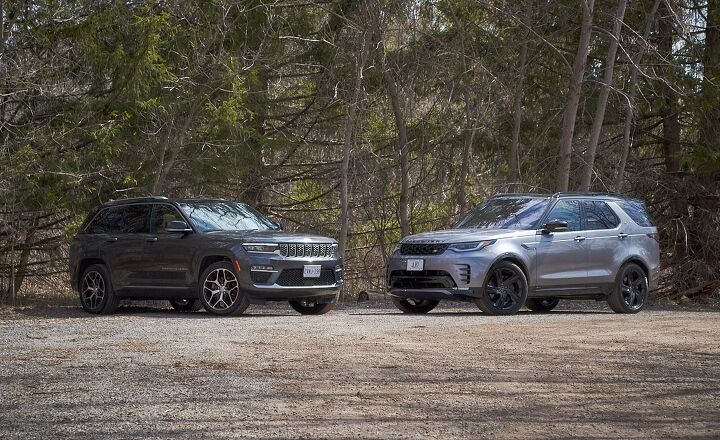

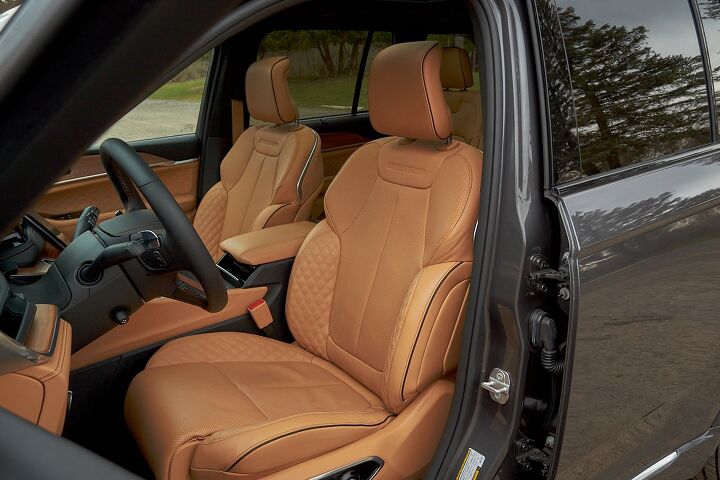
































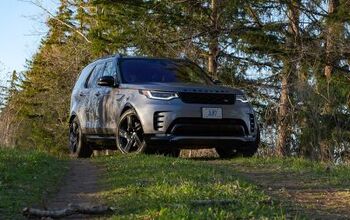

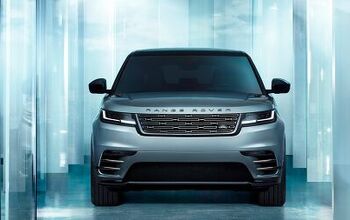

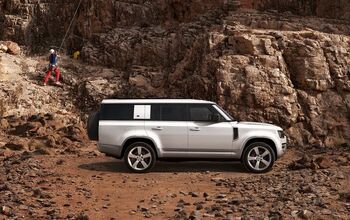
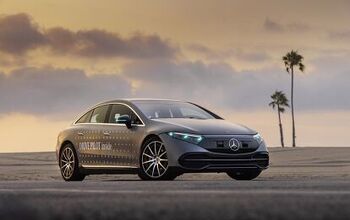
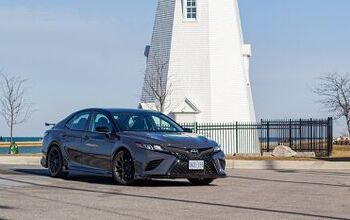

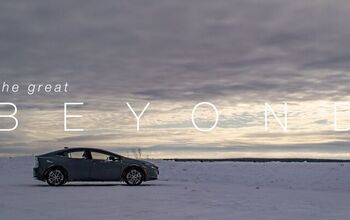
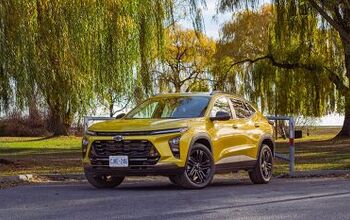



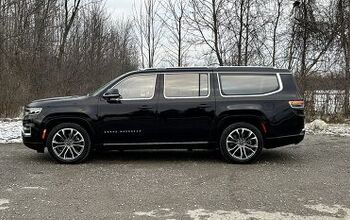
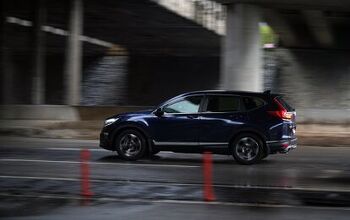
Comments
Join the conversation
GRAND CHEROKEE has Air suspession issue, and the cost is too much high, Dont buy it.
I have both. 2014 JGC Diesel and 2017 LR Disco diesel. Both loaded. No comparison. LR all the way. Jeep drives very heavy. Both get around 26-27 Hwy MPG. Both about 23 all around MPG. If you have any sort of back issue, Jeep drivers seat feels great, wonderful, for about an hour, then you’ll never find a seat position where your back doesn’t hurt. LR seats, firmer to start but a 12 hour drive is no problem. JGC qI won’t even take long trips in my Jeep anymore. Diesel comparison…I’ll still take the LR. Secret…if you work on your own cars, LR’s are cheap to work on. Found out after I bought the Jeep that the Jeep seats have been a known issue for a long time and Jeep won’t change them…what does that tell you? Only LR complaint, can’t put my proud Rhino 18” wheels from my LR3.